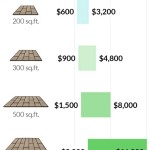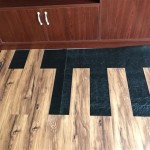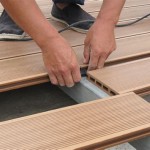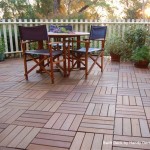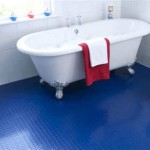Barnwood Hardwood Flooring: A Comprehensive Overview
Barnwood hardwood flooring represents a distinctive and increasingly popular option for residential and commercial spaces seeking to incorporate rustic charm and a connection to historical authenticity. This material, reclaimed from old barns, agricultural buildings, and other weathered structures, offers a unique aesthetic and a compelling narrative that resonates with many homeowners and designers.
Unlike traditionally manufactured hardwood flooring, barnwood flooring carries the visible marks of time and the elements. Nail holes, saw marks, weathering patterns, and subtle color variations contribute to its character, telling a story of past use and creating a genuinely one-of-a-kind flooring surface. This article will delve into the various aspects of barnwood hardwood flooring, exploring its origins, types, benefits, installation considerations, and maintenance requirements.
Origins and Sourcing of Barnwood
The term "barnwood" encompasses hardwood lumber salvaged from a variety of aging structures. These structures, primarily barns across rural landscapes, were typically constructed from durable, locally sourced hardwoods such as oak, hickory, maple, chestnut (historically), and pine. The specific wood species used often depended on the availability of timber in the surrounding region during the period of construction. The age of these structures can range from several decades to well over a century, contributing to the distinctive weathering and patina observed in reclaimed barnwood.
The process of sourcing barnwood typically involves deconstruction rather than demolition. Specialized crews carefully dismantle the structures, salvaging the lumber in a manner that minimizes damage. This process is labor-intensive and requires expertise in recognizing and preserving the valuable characteristics of the reclaimed wood. After the lumber is salvaged, it undergoes a thorough inspection and processing stage.
The sourcing process is also critical from an environmental perspective. Reclaiming barnwood reduces the demand for newly harvested timber, contributing to forest conservation efforts. It also diverts usable wood from landfills, reducing waste and promoting sustainable building practices. The environmental advantages of using reclaimed materials are a significant factor in the growing popularity of barnwood flooring.
Types and Characteristics of Barnwood Flooring
Barnwood flooring is available in various types and grades, each exhibiting unique characteristics determined by the original wood species, age, weathering patterns, and processing methods. Common species found in barnwood flooring include:
- Oak: Known for its durability, strength, and distinctive grain patterns, oak is a popular choice for barnwood flooring. White oak and red oak are both commonly found, each offering subtle variations in color and grain.
- Hickory: Exceptionally hard and durable, hickory is prized for its unique grain patterns and color variations. Its rustic appearance and resilience make it well-suited for high-traffic areas.
- Maple: A lighter-colored hardwood with a fine grain, maple offers a more subtle and refined appearance compared to oak or hickory. It is known for its hardness and resistance to wear.
- Pine: Softer than other hardwoods, pine offers a warm, rustic aesthetic and is often characterized by its knotty appearance. Reclaimed pine flooring often showcases the marks of previous use, adding to its character.
- Chestnut: Once a prevalent species in North America, American chestnut was decimated by blight. Reclaimed chestnut is highly sought after for its unique grain patterns and warm color, offering a rare glimpse into the past.
Beyond the species-specific characteristics, barnwood flooring is further distinguished by its grade, which reflects the degree of weathering, the presence of imperfections (such as nail holes and saw marks), and the overall appearance of the wood. Higher grades typically exhibit fewer imperfections and a more consistent appearance, while lower grades showcase a greater degree of rustic character. The choice of grade depends on the desired aesthetic and the overall design of the space.
The dimensions of barnwood flooring can also vary significantly. Individual planks may be wider or narrower, thicker or thinner, than standard manufactured flooring. This variation contributes to the unique and organic look of barnwood flooring. Many suppliers offer barnwood in both solid and engineered formats, providing options for different installation requirements and subfloor conditions.
Benefits and Considerations of Barnwood Flooring
Barnwood hardwood flooring offers several compelling benefits that contribute to its growing popularity. However, it is also essential to consider the specific requirements and potential challenges associated with this unique material.
Aesthetic Appeal: The primary benefit of barnwood flooring is its distinctive aesthetic. The weathered appearance, character marks, and color variations create a rustic and authentic ambiance that cannot be replicated with new materials. Barnwood flooring adds a touch of history and personality to any space, creating a warm and inviting atmosphere.
Sustainability: As a reclaimed material, barnwood flooring offers significant environmental benefits. It reduces the demand for newly harvested timber, promotes forest conservation, and diverts usable wood from landfills. Choosing barnwood flooring aligns with sustainable building practices and contributes to a reduced environmental footprint.
Durability: Depending on the species and grade of the wood, barnwood flooring can be exceptionally durable. The wood used in barns and agricultural structures was often selected for its strength and resistance to wear. Properly processed and installed barnwood flooring can withstand heavy use and last for generations.
Unique and One-of-a-Kind: No two installations of barnwood flooring are exactly alike. The unique characteristics of each plank and the variations in grain, color, and texture create a truly one-of-a-kind flooring surface. This individuality adds value and character to the space.
However, some considerations are vital when selecting barnwood flooring:
Cost: Barnwood flooring is often more expensive than traditionally manufactured hardwood flooring. The labor-intensive sourcing and processing, the limited availability of the material, and the unique characteristics all contribute to a higher price point.
Installation: The installation of barnwood flooring can be more complex than installing new flooring. The variations in plank dimensions, the presence of imperfections, and the need for careful acclimatization require skilled installers with experience in working with reclaimed materials. Proper subfloor preparation is also critical.
Maintenance: Barnwood flooring typically requires similar maintenance to other hardwood floors. Regular sweeping and vacuuming are essential to remove dirt and debris. Periodic cleaning with a wood-safe cleaner is also recommended. Depending on the finish, refinishing may be required over time to restore the surface and protect the wood.
Availability and Lead Times: The availability of barnwood flooring can vary depending on the supplier and the specific wood species and grade. Lead times for orders may be longer than for standard flooring, as the reclaimed material must be sourced and processed. Planning ahead is essential to ensure that the flooring is available when needed.
Acclimation: Like all wood flooring, barnwood flooring needs to acclimate to the environment in which it will be installed. This means storing the flooring in the space for a period of time, allowing it to adjust to the humidity and temperature. Proper acclimation helps prevent warping, cupping, and other issues after installation.
In summary, barnwood hardwood flooring represents a distinctive and appealing option for those seeking a rustic and historically authentic flooring surface. While it offers numerous benefits, including aesthetic appeal, sustainability, and durability, it's crucial to consider the higher cost, potentially more complex installation, and the need for proper maintenance. Careful planning, selection of a reputable supplier, and professional installation are essential to ensuring a successful and long-lasting barnwood flooring installation.

Reclaimed Rustic Wood Flooring Whole Log Nc

Interior Ideas For Your Dream Home Wood Floor Design Rustic Flooring Hardwood

Reclaimed Barn Wood Flooring Elmwood Timber

Defining Hardwood Flooring Styles Reclaimed Rustic And Modern European

You Asked I Answered Our Reclaimed Barn Wood Floors Andrea Dekker

Pros And Cons Of Reclaimed Lumber For Wood Flooring Charlotte

Hardwood Flooring And Reclaimed Barn Cky Lumber

Rustic Flooring Get A Weathered Look With Reclaimed Wood

If You Want Reclaimed Hardwood Flooring Without The Tag Buy This Architectural Digest

Antique Reclaimed Wood Flooring Olde Ltd
Related Posts



